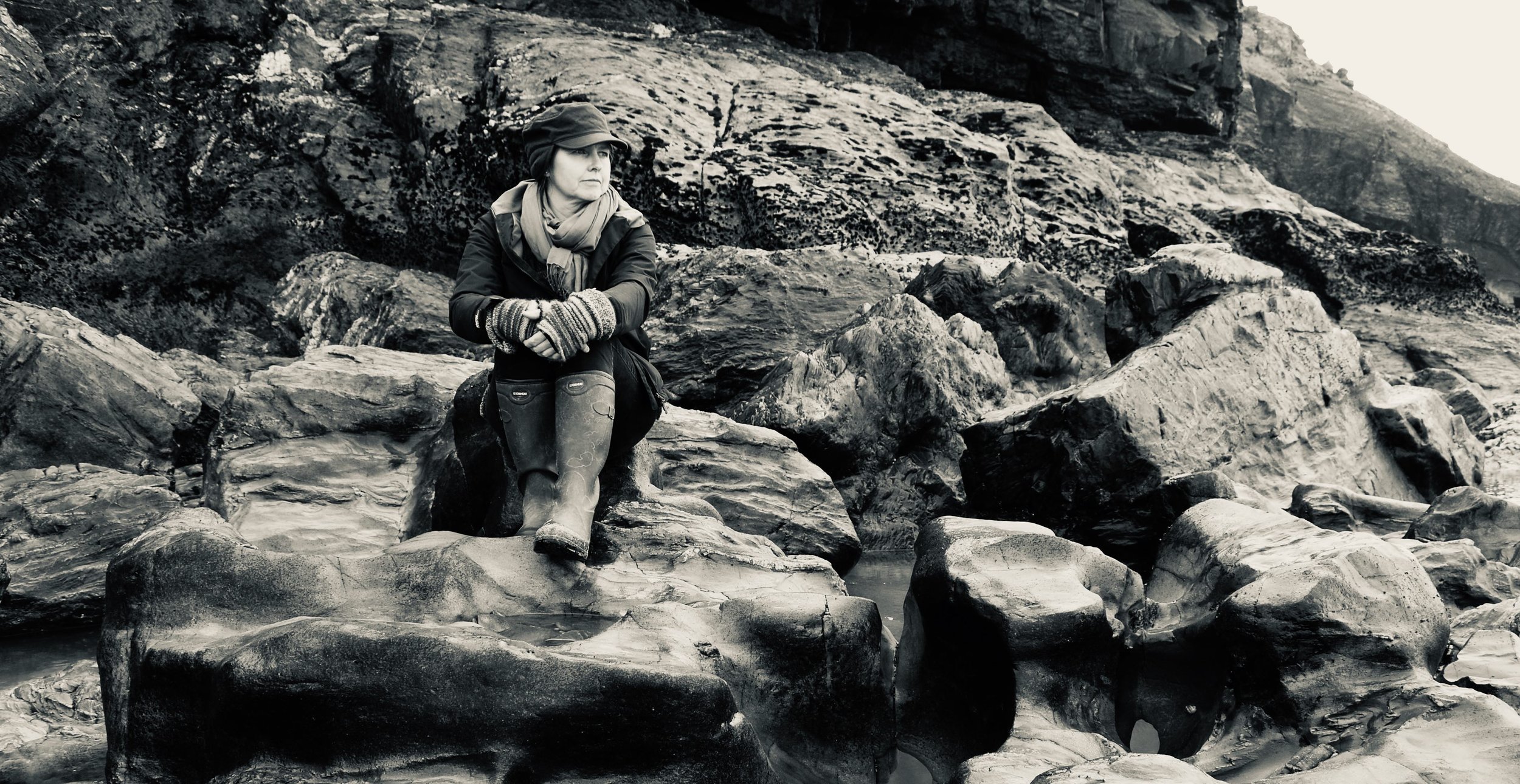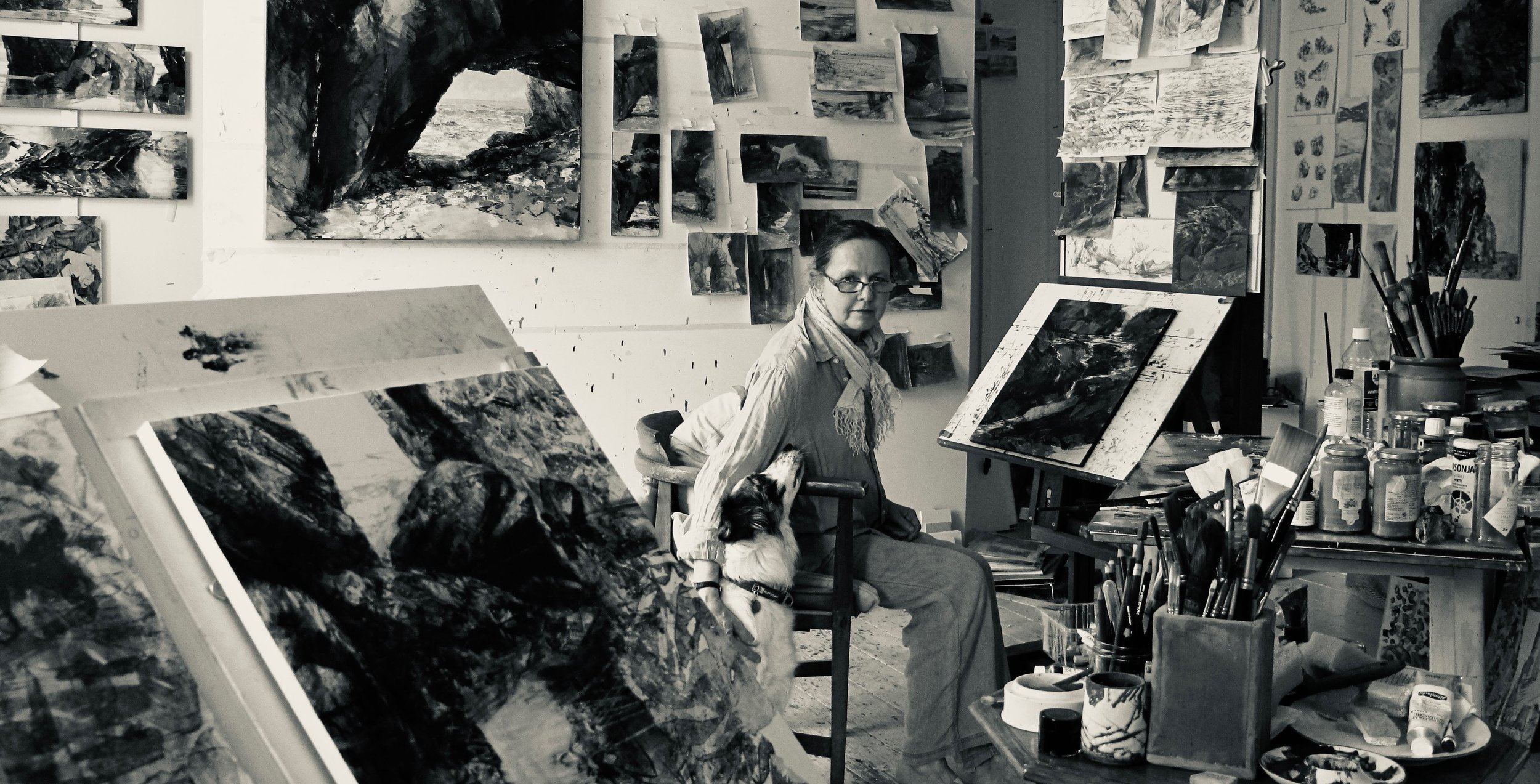Biography
Growing up in landlocked Berkshire my early experiences of the seaside were on family holidays, and that first glimpse of the sea after an interminable car journey was always something miraculous. On a Cornish beach, a magical world of pristine sand, pebbles and shells, pools and streams awaited us. It was never static. You could build a sand castle and see the tide trickle into the moat before going back for tea, exhausted. The next morning we would return to find the beach refreshed, and the adventure began again. A move to the Channel Isles in my early teens made the sea a constant presence, and as a landscape painter it has come to dominate my work as well.
After studies at Falmouth School of Art, Cheltenham and the Royal College of Art, and a few years in London, South India and Jersey, I returned to Cornwall in 2006, and founded The Padstow Studio, a small exhibition space in the heart of the old town.
Within a year of moving to Cornwall I also began working with The Maas Gallery in London, and have since had a series of solo exhibitions with them. Each time, it has given me the opportunity to pursue a more sustained project, and the challenge of putting together an inter-related group of paintings. These shows have acted as way markers for me, and the collaboration has been inspirational.
My work explores the intertidal zone, that liminal space between dry land and the sea. It is a meeting point, constantly changing, where the force of the waves and the run-off from the land combine, shaping everything from massive natural arches to intricate patterns in the sand. The architectural and geological aspects of the North Cornwall coastline have come to dominate my paintings; some places only accessible once or twice each year, others relatively easy to get to, yet so changeable that each encounter is quite authentic and unique
Sketchbook drawing of a cave at Chapel Porth
There is an urgency to drawing in this environment, gathering as much information as possible before the tide comes in, or the light changes. Carrying a sketchbook, rather than a camera, I work from direct observation, examining the subject through pencil sketches and small colour studies, stone by stone. Each mark requires a proper understanding of the subject, and in looking so intently everything is not only recorded on paper, but committed to memory. The experience of being there, the light conditions on the day, the sound of the sea or the wind whistling through, all contribute to the finished painting.
'Sunlight at Diggory's', 2016, oil on linen, 60 x 120 cm
The stacks and arches at Bedruthan and Carnewas were what got me hooked initially, but each section of the coast has a particular character, dictated by localised formations and geology. Over the past few years I have documented many extraordinary features, from granite at Land's End and serpentine on the Lizard, to the near vertical strata of Bude and Hartland. Sometimes the weather takes centre stage, and the open sea, but more often I home in on the nooks and crannies riddling the cliffs.
Daylight is a extraordinary thing. In a pure white room you will see the light play on each surface, picking out edges and exploring the space with infinite tonal gradations, warm and cool shadows. Light waves curve, especially when the source is narrow, so as your eyes become accustomed to the gloom of a sea cave, you begin to make out the surfaces and structure. You become aware of colours too, as mysteriously the light creeps in. The slate grey might be tinged with mauve or turquoise, criss-crossed by ribbons of quartz, while in contrast, the granite of Nanjizal is patterned with massive porphyritic crystals. There is a richness of texture too, and the fault lines and folds are testament to millions of years of intense heat and pressure.
Back among the studio clutter of books and treasures, mineral specimens and gleanings from the strand line, observational studies and drawings fill the walls, crucial to the inception of larger works. There is a cyclical rhythm to the process which seems natural and well balanced, in which rapid, intensive information gathering on a small scale generates a momentum for the larger, more sustained projects. Painting in oil on linen, the rock formations are gradually reconstructed in an incremental process that often seems to mimic the ebb and flow of the tide, and the turn of the seasons.
Sarah Adams
September 2023
Brea Hill from Gun Point, oil on linen, 50 x 150 cm
Photo credits:
Mario Bettella, Tamar Seaborn, Rupert Maas




